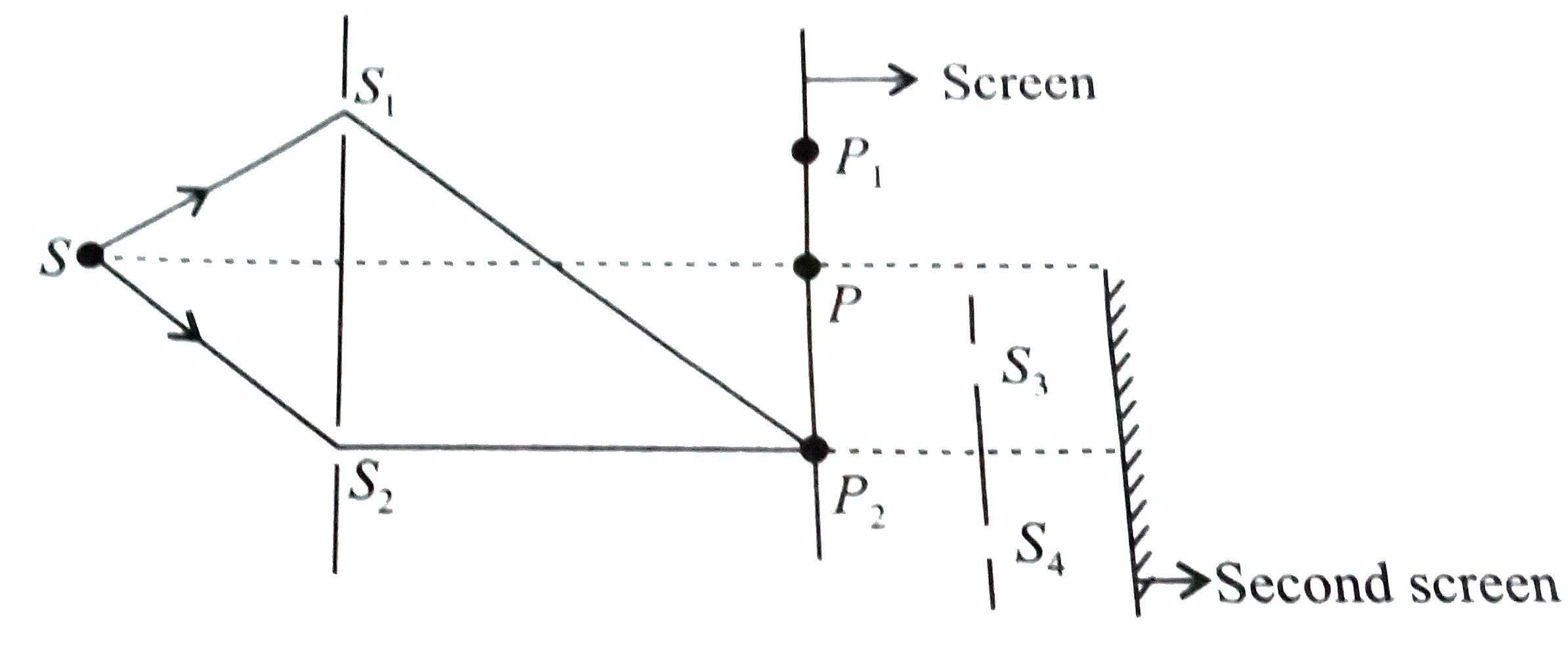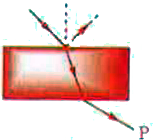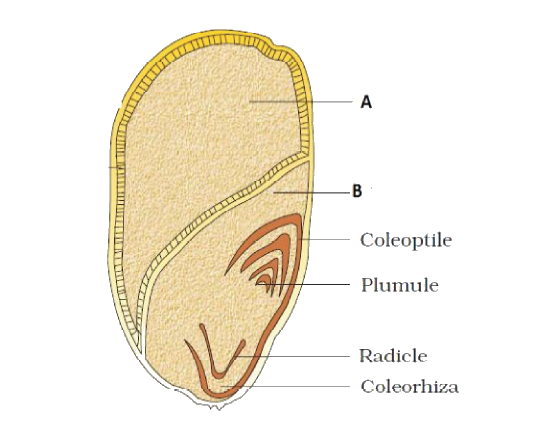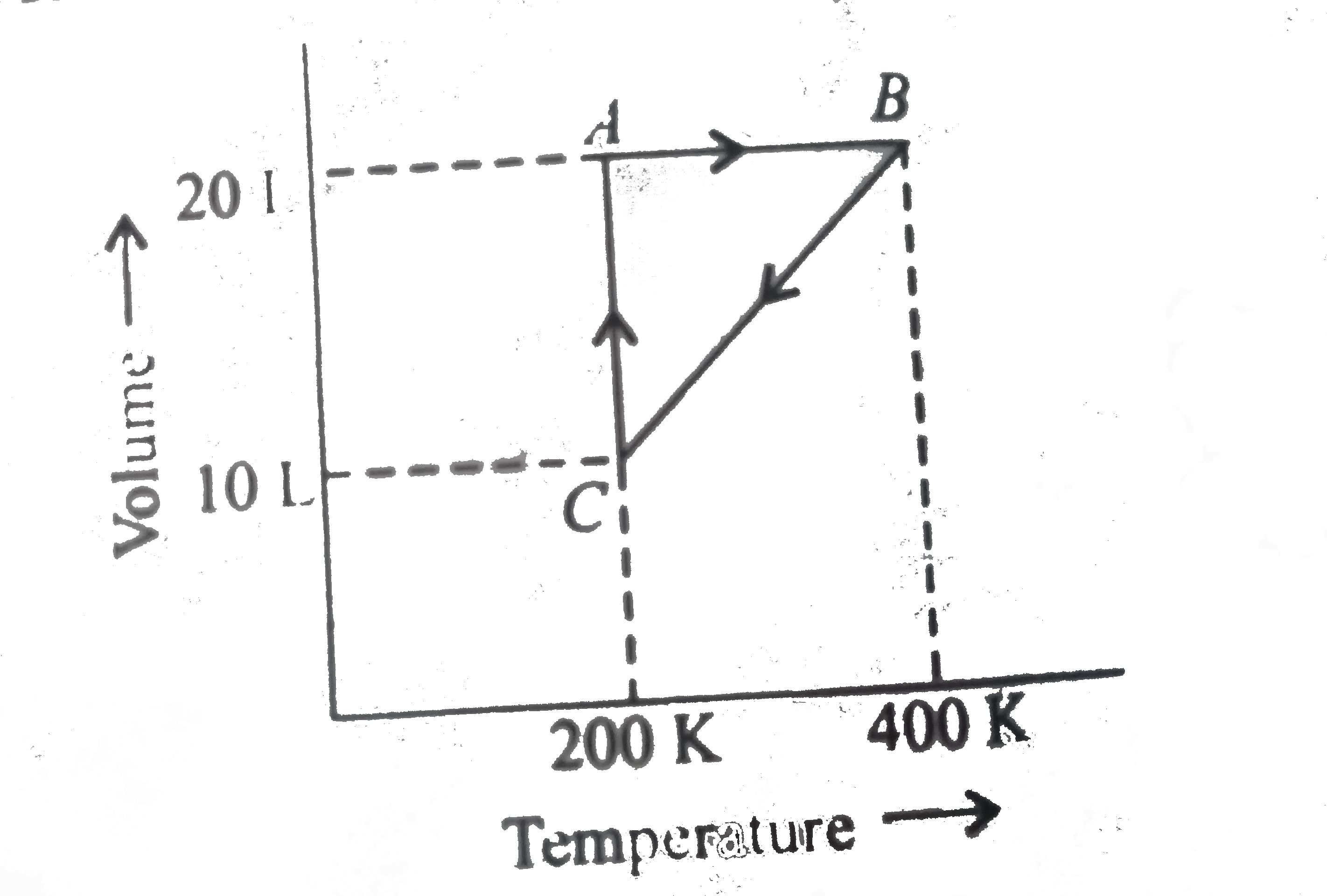EXERCISE -IA (MATCHING TYPE QUESTIONS) from AAKASH SERIES WAVES OPTICS for Class 12
| Class 12 | PHYSICS |
| Chapter | WAVES OPTICS |
| AAKASH SERIES | EXERCISE -IA (MATCHING TYPE QUESTIONS) |
| Medium | English |
| Academic Year | 2023-2024 |
Question 45
A particle is placed on the top of a hemispherical shell of same mass. Shell is free to move on the smooth ground. If particle is given a given a gentle push and reaches to angular position q as shown in figure then for an observer fixed on a shell, ratio of reaction force exerted by shell to pseudo force (as observed from shell) acting on particle, is
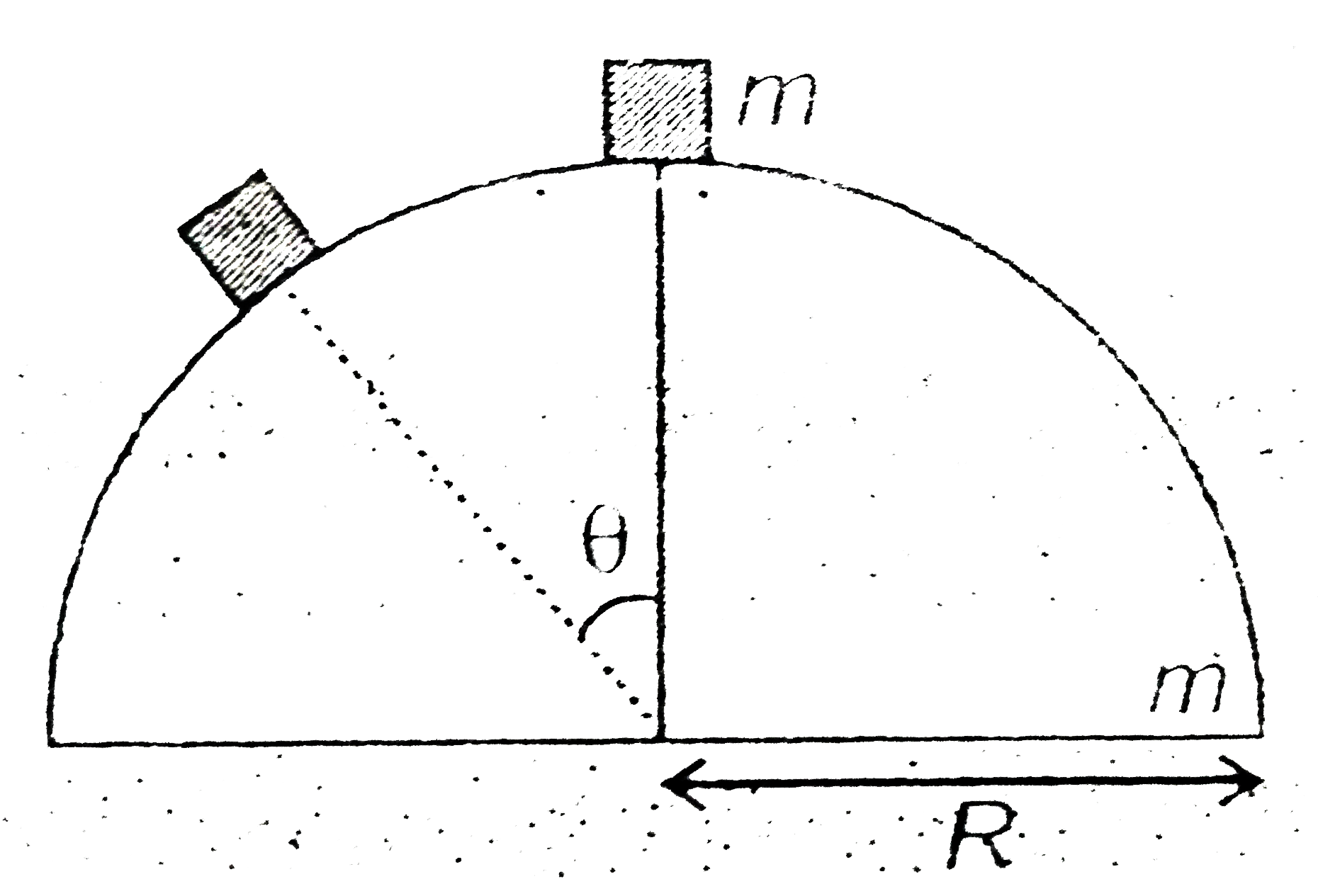 View Solution
View SolutionQuestion 50
On a frictionless horizontal surface , assumed to be the x−y plane , a small trolley A is moving along a straight line parallel to the y−axis ( see figure) with a constant velocity of (√3−1)m/s . At a particular instant , when the line OA makes an angle of 45(∘) with the x− axis , a ball is thrown along the surface from the origin O. Its velocity makes an angle ϕ with the x− axis and it hits the trolley .
(a) The motion of the ball is observed from the frame of the trolley . Calculate the angle θ made by the velocity vector of the ball with the x−axis in this frame .
(b) Find the speed of the ball with respect to the surface , if ϕ=(4θ)/(3).
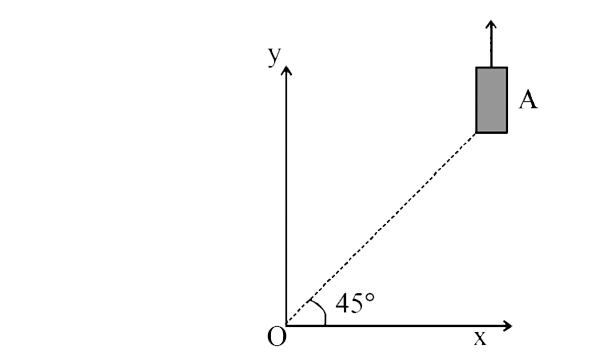 View Solution
View SolutionQuestion 52
A solid sphere of radius R/2 is cut out of a solid sphere of radius R such that the spherical cavity so formed touches the surface on one side and the centre of the sphere on the other side, as shown. The initial mass of the solid sphere was M. If a particle of mass m is placed at a distance 2.5R from the centre of the cavity, then what is the gravitational attraction on the mass m?
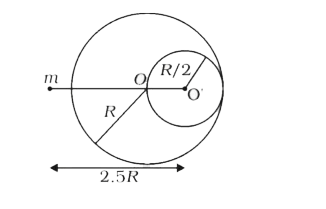 View Solution
View SolutionQuestion 64
Two point sources of sound are kept at a separation of 10 cm. They vibrate in phase to produce waves of wavelength 5.0 cm. What would be the phase difference between the two waves arriving at a point 20 cm from one source (a) on the line joining the sources and (b) on the perpendicular bisector of the line joining the sources ?View SolutionQuestion 117
Consider the following statement A and B and identify the correct answer
A) In the case of narrow source of light coherent sources are obtained by the division of wave front
B) Diffraction is due to interference of light from secondary sources of the same wave front whereas interference is due to superposition of two waves derived from the same source.View SolutionQuestion 119
Consider the following statement A and B and identify the correct answer
A) In the case of narrow source of light coherent sources are obtained by the division of wave front
B) Diffraction is due to interference of light from secondary sources of the same wave front whereas interference is due to superposition of two waves derived from the same source.View SolutionQuestion 122
Consider the following statement A and B and identify the correct answer
A) Fresnel.s diffraction pattern occurs when the source of light or the screen on which the diffraction pattern is seen or when both are at finite distance from the aperture
B) Diffraction light can be used to estimate the helical structure of nucleic acidsView SolutionQuestion 123
Consider the following statement A and B and identify the correct answer
A) Electric vector of electromagnetic wave is the light vector that affects the retina of the eye
B) In a polarized light the sum of all the components of the vibrations in one direction is eaqul to the sum of all the components of the vibrations perpendicular to that directionView SolutionQuestion 124
Consider the following statement A and B and identify the correct answer
A) When light falls on two polariod sheets having their axes mutually perpendicular it is completely extinguished
B) When polyvinyl alcohol is subjected to a large strain the molecules get oriented parallel to the direction of strain and material becomes double refractiveView SolutionQuestion 128
A man in a lift ascending with an upward acceleration a throws a ball vertically upwards with a velocity v with respect to himself and catches it after t1 seconds. After wards when the lift is descending with the same acceleration a acting downwards the man again throws the ball vertically upwards with the same velocity with respect to him and catches it after t2 seconds?View SolutionQuestion 131
When two coherent waves interfere, the minimum and maximum intensities are in the ratio 16 : 25. Then
a) the maximum and minimum amplitudes will be in the ratio 5 : 4
b) the amplitudes of the individual waves will be in the ratio 9 : 1
c) the intensities of the individual waves will be in the ratio 41 : 9
d) the intensities of the individual waves will be in the ratio 81 : 1.View SolutionQuestion 132
If white light is used in Young's double -slit experiment
a) bright white fringe is formed at the centre of the screen
b) fringes of different colours are observed on both sides of central fringe clearly only in the first order
c) the first order violet fringes are closer to the centre of the screen than the first order red fringes
d) the first order red fringes are closer to the centre of the screen than the first order violet fringesView SolutionQuestion 133
Both in interference and diffraction phenomena, alternate dark and bright fringes are obtained on screen
I) generally fringe width is same in interference and not same in diffraction
II) the central fringe in interference has maximum brightness and the intensity gradually decreases on either side
III) in interference the intensity of all bright fringes is same
IV) both the phenomena are produced from same coherent sources.View SolutionQuestion 134
In Young.s double slit experiment, the 10th bright fringe is at a distance x from the central fringe. Then
a) the 10th dark fringe ia at a distance of 19x/20 from the central fringe
b) the 10th dark fringe is at a distance of 21x/20 from the central fringe.
c) the 5th dark fringe is at a distance of x/2 from the central fringe. d) the 5th dark fringe is at a distance of 9x/20 from the central fringe.View SolutionQuestion 135
A light of wavelength 1 is incident on an object of size b. If a screen is at a distance D from the object, identify the correct condition for the obervation of different phenomena
a) if b2=D1, Fresnel diffration is obserbed
b) if b2>>D1, Fraunhofer diffraction is obserbed
c) if b2<<D1, Fraunhofer diffraction is obserbed
d) if b2>>D1, the approximation of geometrical optics is applicableView SolutionQuestion 140
When light is polarised by reflection from a transparent surface.
a) reflection and refracted rays are mutually perpendicular
b) both reflected and refracted rays are plane polarised
c) refraction ray is partially polarised
d) the R.I., of transparent surface is equal to tangent of Brewster.s angle View SolutionQuestion 141
Figure shows two capacitors of capacitance 2μF and 4μF and a cell of 90 V. The switch 'k' is such that when it is in position 1, the circuit ABCD is closed and when it is in position 2, the circuit BCEF is closed.the resistance of both the circuits is negligible os that the capacitor gets fully charged instantly. Initially the switch is in position1. then it is turned in position 2 and then in position 1. Now two cycles are completed. Find the charge (inμC) after two cycles.
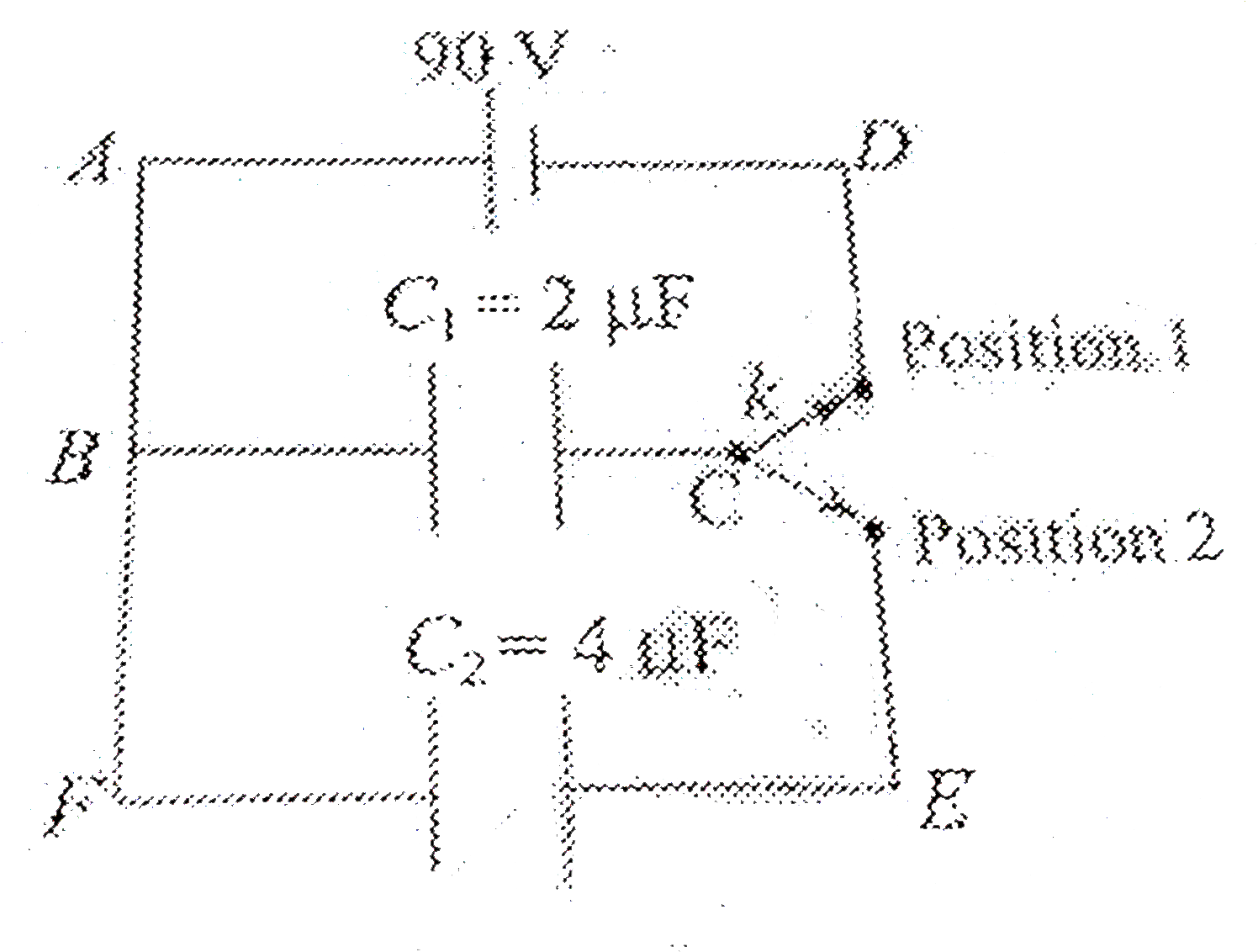 View Solution
View SolutionQuestion 142
Which of the following statements is/are correct?
I) a polaroid of long chain molecules aligned in a particular direction
II) electric vectors along the direction of the aligned molecules in a polaroid gets absorbed
III) an unpolarised light wave is incident on polaroid, then it will get linearly polarized. View SolutionQuestion 144
List-I List-II
a) Fresnel's diffraction e) Bright band
b) Fraunhofer's diffraction f) Source and screen are at finite distance
c) In interference phase difference is even multiple of π g) Dark band
d) In interference phase difference is odd multiple of π h) Source and screen are at infinite distance View SolutionQuestion 152
Two beams of light having intensities 9I and 4I interfere to produce fringe pattern on a screen P, Q and R are three points on the screen at which the phase differences between the interfering beams are 30∘,45∘ and 60∘ and the intensities are IP,IQ and IR respectivley. Arrange the diffrence between the intensities in ascending orderView Solution
All Exercises from AAKASH SERIES Class 12 PHYSICS WAVES OPTICS
- EXERCISE -IA
- EXERCISE -IA (ASCENDING AND DSCENDING ORDER TYPE QUESTIONS)
- EXERCISE -IA (DIFFRACTION)
- EXERCISE -IA (MATCHING TYPE QUESTIONS)
- EXERCISE -IA (MORE THAN ONE OPTION)
- EXERCISE -IA (POLARASATION)
- EXERCISE -IA (SATEMENT TYPE QUESTIONS)
- EXERCISE -IA
- EXERCISE -IA (ASCENDING AND DSCENDING ORDER TYPE QUESTIONS)
- EXERCISE -IA (DIFFRACTION)
- EXERCISE -IA (MATCHING TYPE QUESTIONS)
- EXERCISE -IA (MORE THAN ONE OPTION)
- EXERCISE -IA (POLARASATION)
- EXERCISE -IA (SATEMENT TYPE QUESTIONS)
- EXERCISE -IA
- EXERCISE -IA (ASCENDING AND DSCENDING ORDER TYPE QUESTIONS)
- EXERCISE -IA (DIFFRACTION)
- EXERCISE -IA (MATCHING TYPE QUESTIONS)
- EXERCISE -IA (MORE THAN ONE OPTION)
- EXERCISE -IA (POLARASATION)
- EXERCISE -IA (SATEMENT TYPE QUESTIONS)
- EXERCISE -IA
- EXERCISE -IA (ASCENDING AND DSCENDING ORDER TYPE QUESTIONS)
- EXERCISE -IA (DIFFRACTION)
- EXERCISE -IA (MATCHING TYPE QUESTIONS)
- EXERCISE -IA (MORE THAN ONE OPTION)
- EXERCISE -IA (POLARASATION)
- EXERCISE -IA (SATEMENT TYPE QUESTIONS)
- EXERCISE -IB (ASSERTION AND REASON)
- EXERCISE -IB (ASSERTION AND REASON)
- EXERCISE -IB (ASSERTION AND REASON)
- EXERCISE -IB (ASSERTION AND REASON)
- EXERCISE -II (DIFFRACTION)
- EXERCISE -II (INTERFERENCE)
- EXERCISE -II (POLARISATION)
- EXERCISE -II (DIFFRACTION)
- EXERCISE -II (INTERFERENCE)
- EXERCISE -II (POLARISATION)
- EXERCISE -II (DIFFRACTION)
- EXERCISE -II (INTERFERENCE)
- EXERCISE -II (POLARISATION)
- EXERCISE -II (DIFFRACTION)
- EXERCISE -II (INTERFERENCE)
- EXERCISE -II (POLARISATION)
- EXERCISE -III (DIFFRACTION)
- EXERCISE -III (DOPPLER EFFECT IN LIGHT, INTERFERENCE)
- EXERCISE -III (POLARISITION)
- EXERCISE -III (DIFFRACTION)
- EXERCISE -III (DOPPLER EFFECT IN LIGHT, INTERFERENCE)
- EXERCISE -III (POLARISITION)
- EXERCISE -III (DIFFRACTION)
- EXERCISE -III (DOPPLER EFFECT IN LIGHT, INTERFERENCE)
- EXERCISE -III (POLARISITION)
- EXERCISE -III (DIFFRACTION)
- EXERCISE -III (DOPPLER EFFECT IN LIGHT, INTERFERENCE)
- EXERCISE -III (POLARISITION)
- PROBLEM
- PROBLEM
- PROBLEM
- PROBLEM

